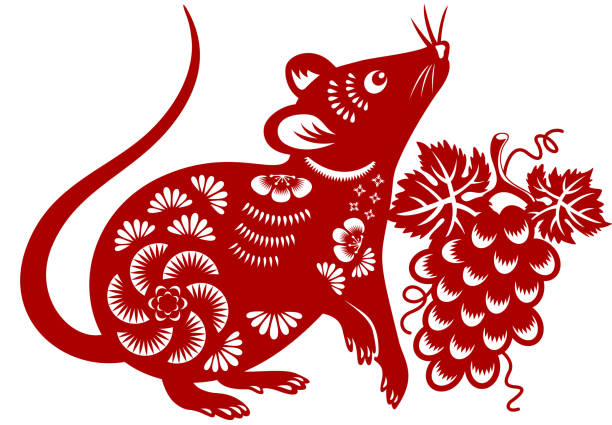The Surprising History of the Asian Rat

Have you ever heard of the Asian rat? This little rodent has a surprisingly rich history, from its origins in Asia to its spread across the globe. While many people may think of rats as pests or nuisances, there’s more to these creatures than meets the eye. In this blog post, we’ll explore everything you need to know about the Asian rat – where it came from, how it got here, and what distinguishes it from other types of rats. Plus, we’ll share some tips on how to deal with an infestation if you ever encounter one. So join us as we uncover the fascinating history of this often-overlooked creature!
Where did the Asian rat come from?
The Asian rat, also known as the black rat or roof rat, has a long and storied history. It’s believed to have originated in southern Asia, specifically India or China. From there, it spread throughout the continent and eventually made its way to Europe via trade routes.
One of the reasons that the Asian rat was able to travel so far and wide is because it’s an excellent climber. Its long tail gives it great balance on narrow ledges and branches, while its sharp claws allow it to grip onto almost any surface.
Once in Europe, the Asian rat quickly became a common sight in cities like London and Paris. In fact, some historians believe that these rats may have played a role in spreading diseases like bubonic plague during medieval times.
From Europe, the Asian rat continued to spread across the globe – including North America. Today, you can find this species living in many different parts of the world – often thriving in urban environments where food sources are plentiful.
Despite their reputation as pests, however, Asian rats actually play an important role in many ecosystems. They help control insect populations by eating bugs like cockroaches and beetles – which means they’re not all bad!
How did the Asian rat get to America?
The Asian rat, also known as the black rat or roof rat, is believed to have originated in Southeast Asia. From there, it spread throughout Asia and eventually made its way to Europe through trade routes.
It’s unclear exactly how the Asian rat made its way to America, but historians believe that it likely arrived on ships during the Age of Exploration in the 15th and 16th centuries. These rats were stowaways on ships carrying goods between Europe and the Americas.
Once they arrived in America, these rats quickly established themselves in urban areas where they could easily find food and shelter. They are highly adaptable creatures that can survive in a variety of environments, making them a formidable pest for homeowners and businesses alike.
Today, many cities across America continue to struggle with Asian rat infestations. These pests can carry diseases such as leptospirosis and hantavirus, making them a serious health risk for humans. It’s important for property owners to take steps to prevent infestations by sealing up entry points around their homes or businesses and practicing good sanitation habits.
What are the characteristics of the Asian rat?
The Asian rat, also known as the black or roof rat, is a medium-sized rodent that has adapted well to living in both urban and rural environments. One of their distinguishing features is their sleek black fur which covers their body from head to tail.
These rats are agile climbers and can often be found running along power lines or climbing up walls and trees. They have large ears and a pointed snout which they use to navigate through tight spaces. Additionally, they have long tails that help them balance while climbing.
The Asian rat is omnivorous, meaning it eats both plant matter such as fruits and vegetables, as well as animal protein like insects and smaller rodents. Their sharp teeth allow them to easily gnaw through wood, plastic or other materials making them capable of causing significant damage in homes.
One concerning characteristic of this species is its ability to reproduce quickly with females able to give birth every three weeks producing six babies at a time. This makes an infestation difficult to control once it starts.
The adaptability of the Asian rat coupled with its excellent reproductive abilities make it a formidable pest that requires swift action when detected in your home or business premises.
How does the Asian rat compare to other rats?
When it comes to comparing the Asian rat to other rats, there are a few factors to consider. Firstly, it’s worth noting that there are over 60 species of rats in the world, so comparisons can’t be made across the board.
In terms of size and appearance, the Asian rat is similar to its close relative – the Norway Rat. Both have brown or grey fur and a stocky build. However, some experts note that Asian rats tend to have slightly longer tails than their Norwegian counterparts.
One significant difference between these two types of rats lies in their behavior patterns. The Norwegian rat tends to burrow underground while Asian rats prefer living at ground level – often making nests in vegetation or trash piles.
Another notable comparison is with black rats (also known as roof rats). While black rats are slightly smaller than both Norway and Asian Rats- they share many characteristics with Asian Rats such as feeding on fruits and vegetables rather than meat products like their larger cousin Norway Rats.
While similarities exist among different species of rodents- each has its own unique traits that make them distinct from one another.
How can you get rid of an Asian rat infestation?
Asian rats are known for their ability to cause a serious infestation in homes and buildings. If you have an Asian rat infestation, it’s important to take action right away before the problem gets worse.
One of the first things you should do is identify where the rats are coming from. Look for any holes or cracks in your walls, floors, or foundation that may be allowing them entry into your home. Seal up these entry points with caulk or steel wool.
Next, eliminate any food sources that might be attracting the rats into your home. Make sure all food is stored in tightly sealed containers and clean up any spills or crumbs immediately.
You can also set traps to catch Asian rats. Snap traps and glue boards are effective options, but make sure they’re placed out of reach of children and pets.
If none of these methods work, consider calling a professional pest control company who can safely remove the rats from your home using specialized equipment and techniques.
Remember that prevention is key when it comes to dealing with an Asian rat infestation. Keep your living space clean and free of clutter so there isn’t anywhere for them to hide. By taking steps now to get rid of these rodents, you’ll save yourself time and frustration down the road.
Conclusion
The Asian rat may have a surprising history, but it is still a pest that needs to be dealt with. Its ability to carry diseases and reproduce quickly make it a threat to both humans and animals. If you suspect an Asian rat infestation in your home or business, it’s essential to take immediate action.
Prevention measures such as sealing up holes and cracks in walls, floors, and foundations can go a long way in keeping these rodents out of your property. Additionally, proper sanitation practices such as storing food properly and disposing of garbage regularly can also prevent rats from being attracted to your space.
If you do find yourself dealing with an infestation, professional extermination services are often the most effective solution. They will help identify the scope of the problem and develop a comprehensive plan for eliminating all traces of the pests from your property.
By understanding more about this invasive species’ history and characteristics, we can better protect ourselves against its harmful effects on our health and well-being.



